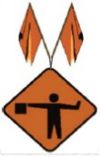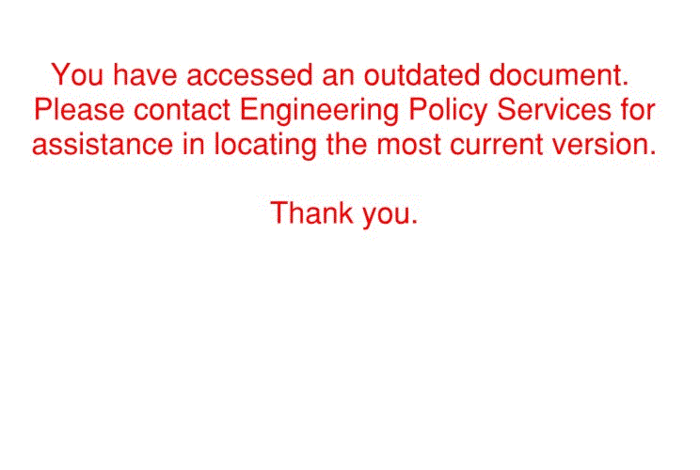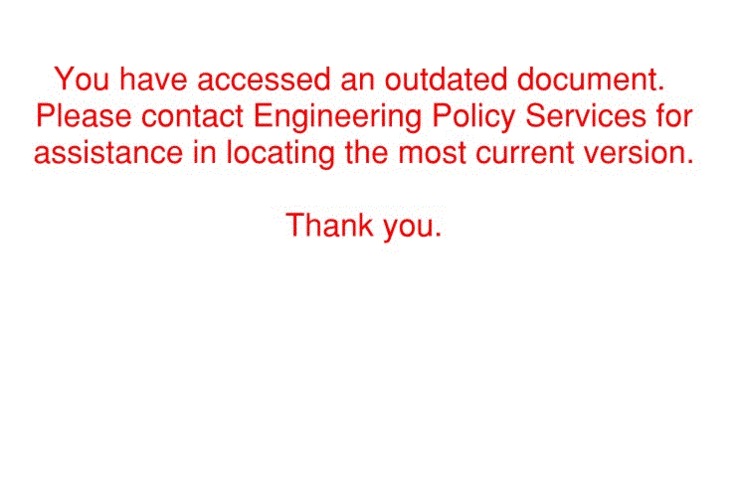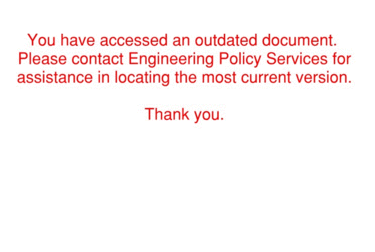Difference between revisions of "616.20 Flagger Training"
m (article expanded to include flagger training details) |
m (→Flagger Guidelines: 2nd paragraph replaced with new verbiage on stationary operations, per HR) |
||
| Line 75: | Line 75: | ||
Prior to the start of flagging operations, all signs should be in place. A good flagger location is one where the sight distance is sufficient and the flagger is clearly visible to approaching motorists, workers and, when practical, the other flagger(s). | Prior to the start of flagging operations, all signs should be in place. A good flagger location is one where the sight distance is sufficient and the flagger is clearly visible to approaching motorists, workers and, when practical, the other flagger(s). | ||
| − | + | In stationary operations, the flagger should be positioned a distance equal to the appropriate sign spacing, typically 500 ft. from the flagger symbol sign. For mobile operations, spacing between flagger and flagger symbol sign shall not exceed one mile. When the maximum allowable work zone length cannot be attained due to this limitation, additional flagger symbol signs may be staged throughout the length of the work zone. In such instances, the flagger symbol signs are set up and knocked down as work progresses so only one sign is displayed in each direction and that that sign is no more than one mile in advance of the flagger. | |
When more than one flagger is being used, all communication procedures should be clear before any flagging begins. If there is a major intersection within the closed area, an additional flagger may be needed to control traffic entering the temporary traffic control zone from the major intersection. | When more than one flagger is being used, all communication procedures should be clear before any flagging begins. If there is a major intersection within the closed area, an additional flagger may be needed to control traffic entering the temporary traffic control zone from the major intersection. | ||
Revision as of 11:15, 24 August 2009
| Flagger Training Booklet |
| Flagger Training Booklet |
| Video |
This article provides for uniform and consistent flagging within MoDOT and it trains employees how to protect themselves, co-workers and travelers.
Flaggers are to protect MoDOT personnel and provide safe, courteous and authoritative directions to traffic seeking passage through the work area. The flaggers job is the most important one on the crew. The lives of all individuals in the work zone depend on the flagger.
Contents
Introduction
Remember, as a flagger, your duties are to protect MoDOT personnel and provide safe, courteous and authoritative directions to traffic seeking passage through the work area. Your job is the most important one on the crew. The lives of all individuals in the work zone depend on YOU.
The following information is designed to give you some basic guidelines regarding flagging operations. Familiarize yourself with these procedures. If you have any questions or concerns, do not hesitate to ask your supervisor.
For your personal safety as a flagger, always face toward traffic and stand outside the path of an approaching vehicle.
Flagging should only be used when all other traffic control devices are inadequate to warn and direct traffic.
Guidance for Flagger Duration
Flaggers should not flag for more than two hours at one time, unless it is an emergency situation. Supervisors shall provide flaggers with a 15-minute break from flagging in non-emergency situations. The supervisor should consider environmental, physical and work factors when determining appropriate flagging and break durations in the field.
Course Contents
At the end of this class, you should be able to:
- List the qualifications of a flagger
- Understand MoDOT’s Traffic Control for Field Operations Manual
- Explain when flagging should not be done
- Describe the components of a work zone
- Describe why flagging is important
- Determine the necessary equipment needed to flag
- Utilize proper hand signals while flagging
- Set up and handle one-lane traffic on a two-way road
- Use various methods to communicate with other flaggers
- Direct traffic while on a haul road
- Recognize different types of drivers and how to deal with them
- Handle nighttime flagging operations
- Communicate with the traveling public, crew workers and supervisors
Work Zone Manuals
What is MoDOT’s governing manual for flagger and work zone operations?_______
MUTCD stands for:________________
List the five qualifications of a flagger, the person providing temporary traffic control:
1)
2)
3)
4)
5)
Flagger Guidelines
Prior to the start of flagging operations, all signs should be in place. A good flagger location is one where the sight distance is sufficient and the flagger is clearly visible to approaching motorists, workers and, when practical, the other flagger(s).
In stationary operations, the flagger should be positioned a distance equal to the appropriate sign spacing, typically 500 ft. from the flagger symbol sign. For mobile operations, spacing between flagger and flagger symbol sign shall not exceed one mile. When the maximum allowable work zone length cannot be attained due to this limitation, additional flagger symbol signs may be staged throughout the length of the work zone. In such instances, the flagger symbol signs are set up and knocked down as work progresses so only one sign is displayed in each direction and that that sign is no more than one mile in advance of the flagger.
When more than one flagger is being used, all communication procedures should be clear before any flagging begins. If there is a major intersection within the closed area, an additional flagger may be needed to control traffic entering the temporary traffic control zone from the major intersection.
Law enforcement personnel should be secured to perform flagging functions, when needed, at intersections fully controlled by an active traffic signal or stop signs. Law enforcement personnel are the only ones who can legally assign right of way through an intersection when the assignment is opposed to in-place traffic control.
When flagging on a rural undivided highway, the length of the work zone should not exceed three miles. When flagging in an urban area, the length of a work zone should not exceed one mile. When work is completed and flaggers are off the road, remove work zone signs promptly.
Emergency vehicles have right of way priority in a work zone.
List flagging equipment
1)
2)
3)
4)
5)
6)
STOP/SLOW Paddle
The STOP/SLOW paddle shall be retroreflective, an octagonal shape on a rigid handle and be 18 in. wide with letters at least 6 in. tall.
Flags
In emergency situations, a red flag with a minimum size of 24 in. x 24 in. on a 3 ft. staff may be used in place of a paddle until a paddle is available. However, as soon as a paddle is available, it shall be used.
When flags are used at night, they shall be retroreflective.
Communication Devices
When required, flaggers shall be equipped with a portable, two-way, FCC-approved communication system. The two flaggers must be able to see each other or be equipped withan appropriate communication device.
Traffic Control Techniques
Flagging Procedures
1) To stop traffic
- Stand on the shoulder
- Face traffic
- Hold STOP sign vertically to side at arm’s length
- Hold other arm outstretched with palm facing motorist
- Make eye contact with driver
- Walk toward the centerline when one or two cars have stopped
2) To release traffic
- Walk back over to the shoulder
- Stand facing toward the flow of traffic
- Hold SLOW sign facing traffic at arm’s length
- Motion traffic through with sweeping motion of free arm
3) To alert or slow traffic
- Stand on the shoulder
- Face traffic
- Hold SLOW sign vertically to side at arm’s length
- Lower and raise free hand slowly with palm down
4) To temporarily stop traffic
- Only one lane closed for loading/unloading
- Only one flagger
- Stop traffic as in #1, above
- Wait until obstruction has passed
- Walk back to the shoulder
- Stand facing toward the flow of traffic
- Turn sign parallel to the shoulder, with STOP side facing flagger
- Motion traffic through with sweeping motion of free arm
Flagger Station
- Located in advanced warning area.
- Be alert, remaining standing at all times.
- Always face oncoming traffic and stand outside the path of an approaching vehicle.
- A flagger’s normal station is on the shoulder of the road, at a minimum of 500 ft. from the flagger symbol sign and a minimum of 100 ft. from the work space.
- Park your vehicle off the road, away from your station.
- Make sure you are visible to oncoming traffic, not standing where the sun impedes visibility or in a shadow.
- Stand in a location that allows approaching traffic adequate time to respond.
- Have a planned escape route.
Factors that Affect Sight Distances
You should be visible for at least 500 ft. in daytime operations, 1000 ft. for nighttime operations, or more if conditions warrant. What are some of the things that might hide you from the driver’s sight?
- Hills
- Curves
- Obstructions
- Shade – it is hard to see people in shaded areas
- Color contrast, such as wearing an orange vest while standing next to a similarly colored truck
- Bad weather
- Darkness
| Note: Use no less than the minimum distance or value and no more than the maximum distance or value. You may exceed the minimum value and go a shorter distance than the maximum value. |
Single Flagger
There are two different situations for the single flagger.
1) A single flagger may be used when all three of the following are met:
- A low volume road with less than 500 AADT
- A good sight distance greater than 1000 ft. and
- A work zone shorter than 500 ft.
The flagger should have a safe location to stand and a planned escape route.
2) A single flagger may also be used for short-term, single lane closures. An example would be a truck depositing material off the edge of the roadway. In this situation, the flagger would stop the traffic in this lane while the other lane flows free. When the lane is opened again, the flagger allows the traffic to proceed in their normal lane. After stopped traffic is allowed to proceed, the flagger should turn the STOP/SLOW paddle parallel to the flagger so that no message is displayed to either direction of traffic.
| Note: Single flagging procedures should not be conducted during nighttime work zone operations. |
Two Flaggers
When two flaggers are required, lines of communication must be established prior to the start of flagging operations. The two flaggers must be able to see each other or have two-way walkie-talkies designated for proper communication. One flagger should be the lead flagger and coordinate all activities.
Always use appropriate advance warning signs, giving particular attention to sign visibility, legibility and placement.
Remember to always remove signs or completely cover the sign messages when they do not apply to present traffic control conditions.
Advance Flagger
An advance flagger may be used where there is limited sight distance to the activity area or where long lines of traffic form. The decision to use an advance flagger should be made at the supervisor level at the work zone. As an advance flagger, you should stop each vehicle as it approaches, inform the driver of the situation ahead, and explain the actions required such as “fresh oil ahead, drive slowly,” “keep to the right and stay in line,” etc. Where there are long lines of stopped traffic waiting to proceed, the advance flagger should move down the line and inform each driver of the reason for the delay and the approximate length of the delay. Be considerate, alert and avoid unnecessary conversations.
Nighttime Work Zones
What is considered nighttime work? Nighttime work is work beginning one-half hour before sunset and ends one-half hour after sunrise.
Requirements for Nighttime Flagging
1)
2)
3)
4)
Inspection Schedule
Work zone supervisors need to check the flow of traffic to ensure traffic is flowing at it was designed.
When to inspect:
- Immediately after work zone set up
- After any modifications
- At night
- Intermittently throughout the duration of the job
- Under adverse weather conditions such as wind, rain, fog or snow.
Worker Safety Considerations
Protect yourself and co-workers! Once your supervisor has selected or assigned your flagger position, look over the area for one or more methods or routes of escape – a place to get to in order to avoid being injured by oncoming vehicles, regardless of the reason.
Should you observe a vehicle coming your direction, protect yourself first and THEN warn the crew.
It is a good idea to have an air horn or some type of warning device that can be heard above construction noise by the crew.
Make sure that the crew is aware of your signals and knows what to do when you sound the warning.
Remember, your job is handling traffic. Do not otherwise assist the work crew, watch construction operations instead of traffic or engage in any other activity in addition to your duties as a flagger.
If you need a break, tell your supervisor so that another qualified flagger may relieve you.
Clothing
- Class II apparel, orange vest and orange hat for daytime operations
- Class III apparel and a hat shall be worn during nighttime flagging operations
- Clothing shall be in accordance with MoDOT’s Traffic Control for Field Operations and Safety Rules and Regulations.
- All PPE (Personal Protective Equipment) worn during nighttime operations shall be retroreflective.
- Vest, shirt, jacket or pants (when required) shall be orange, silver or a fluorescent version of these colors.
- A neat appearance helps gain respect and makes your job more effective.
Retroreflective clothing
Retroreflective clothing shall be visible for at least 1000 ft. during nighttime flagging and shall identify the wearer as a person.
Label the components of a work zone and then explain where a flagger would stand on a single flagger operation and two-flagger operation.






